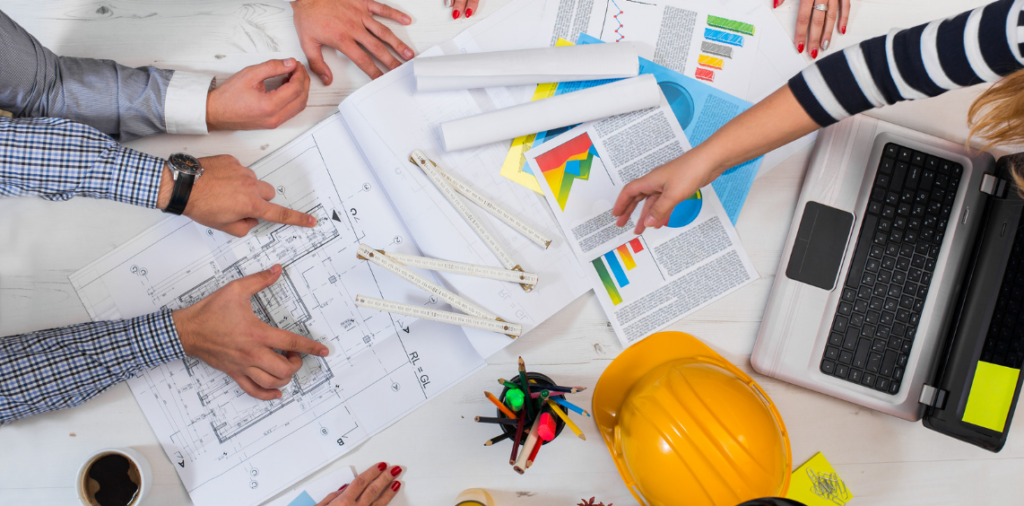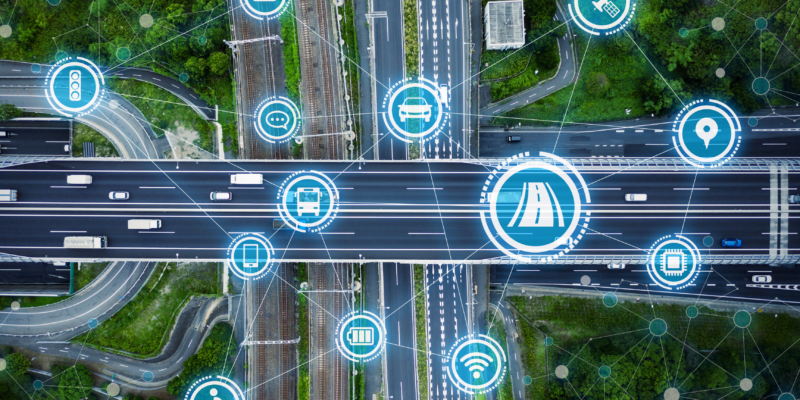Happy New Year!
If you’ve been reading the Steadfast blog, you know that the construction industry is undergoing a significant transformation, largely propelled by the integration of smart infrastructure.
This innovative approach is revolutionizing how construction projects are planned, executed, and managed, paving the way for enhanced efficiency, sustainability, and cost-effectiveness.
Here are a few ways we expect smart infrastructure to continue reshaping the construction industry this year:
Efficient Project Planning and Design
Smart infrastructure utilizes advanced technologies like Building Information Modeling (BIM), enabling comprehensive digital representations of construction projects. BIM facilitates collaborative planning and design, allowing stakeholders to visualize and analyze the entire project in a virtual environment before construction begins. This significantly minimizes errors, enhances decision-making, and optimizes resource allocation.
IoT and Real-Time Monitoring
The Internet of Things
Over the last couple years, IoT has permeated the construction industry, introducing connected devices and sensors across job sites. These devices collect real-time data on various parameters like equipment performance, material inventory, environmental conditions, and worker safety. This data is analyzed to improve productivity, preempt maintenance issues, and ensure a safer working environment.
Augmented Reality (AR) and Virtual Reality (VR)
We’ve talked about them before, but we really can’t stress how much AR and VR technologies are transforming how stakeholders interact with construction projects. These tools offer immersive experiences, enabling architects, engineers, and clients to visualize designs in a three-dimensional space. AR and VR also aid in training, allowing workers to undergo simulations for complex tasks, enhancing their skills and safety awareness.
Advanced Construction Materials and Techniques
The development of innovative construction materials, such as self-healing concrete and sustainable composites, contributes to more durable and eco-friendly structures. Additionally, prefabrication and modular construction techniques, integrated with smart technologies, streamline assembly processes, reducing construction timelines and minimizing waste.

AI-Powered Project Management
Artificial Intelligence
AI is everywhere, and it is playing a pivotal role in project management by analyzing vast datasets to forecast potential risks, optimizing schedules, and enhancing resource utilization. AI-driven software assists in making data-driven decisions, thereby increasing project efficiency and reducing costs for both contractors and their clients.
Sustainability and Energy Efficiency
Smart infrastructure emphasizes sustainability by incorporating energy-efficient designs and renewable energy sources. Green building practices, coupled with IoT-enabled systems for energy management and monitoring, ensure minimal environmental impact throughout a structure’s lifecycle.
Remote Monitoring and Collaboration
The adoption of remote collaboration tools and cloud-based platforms facilitates seamless communication among project teams regardless of geographical locations. This enables real-time updates, remote inspections, and improved coordination among stakeholders, enhancing project efficiency and flexibility.
Data Analytics and Predictive Maintenance
Data analytics derived from smart infrastructure aid in predictive maintenance, allowing for proactive identification of equipment failures or structural issues. This proactive approach keeps workers safer, minimizes downtime, reduces maintenance costs, and prolongs the lifespan of assets.
Regulatory Compliance and Safety Measures
Safety is the most important part of any job, and smart infrastructure assists in ensuring compliance with stringent regulations and safety standards. Real-time monitoring of job sites helps identify potential hazards, promoting a safer working environment for construction workers.
The future of smart infrastructure holds even more promise, with advancements in robotics, 3D printing, and AI-driven automation expected to further revolutionize construction practices. These developments will likely lead to further increased efficiency, precision, and sustainability in the industry.
Since we’re always interested in improving safety and sustainability, you know Steadfast will keep you updated as smart infrastructure continues to grow!

